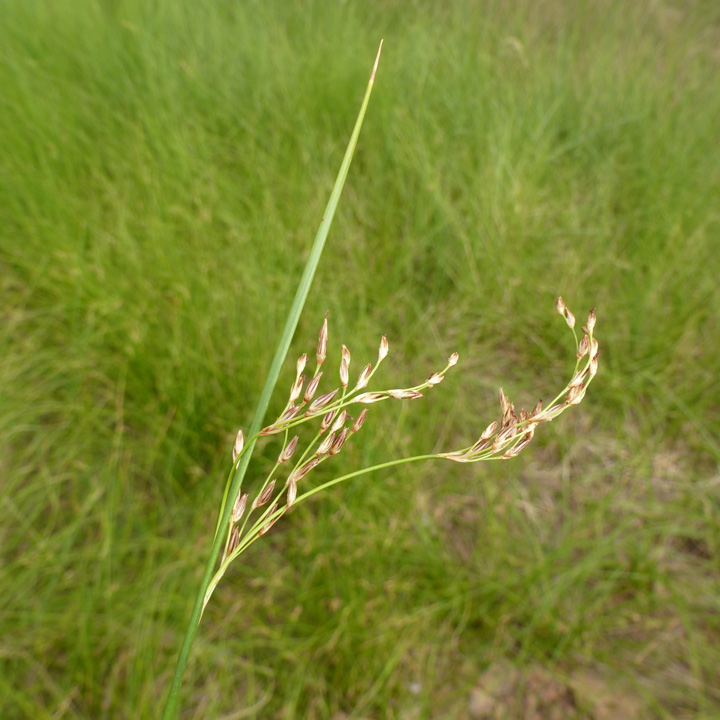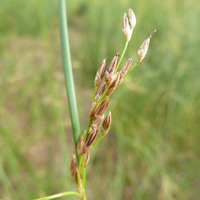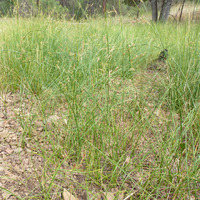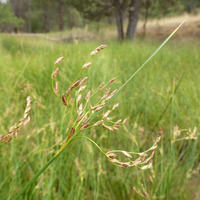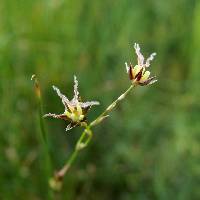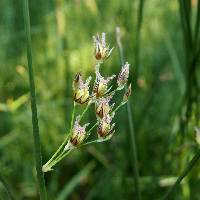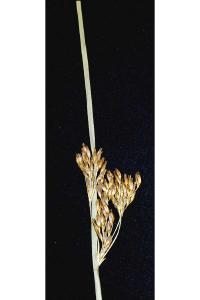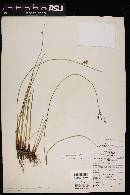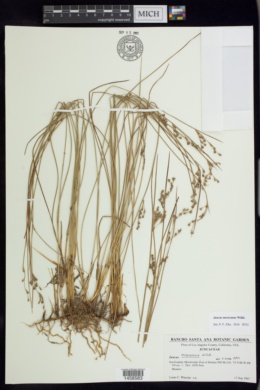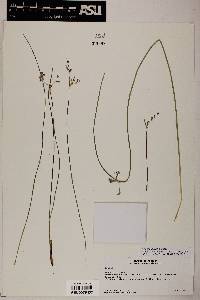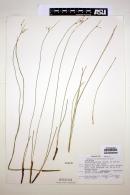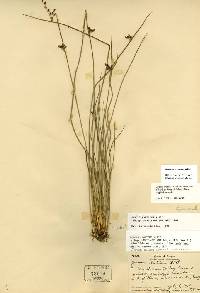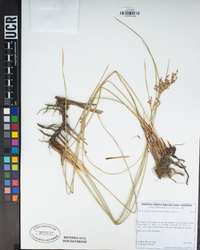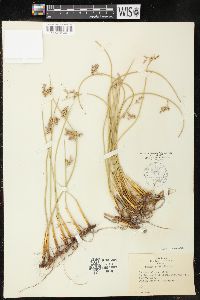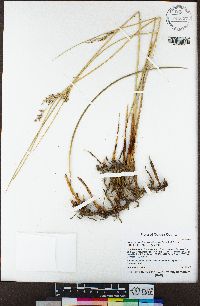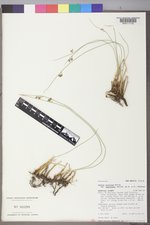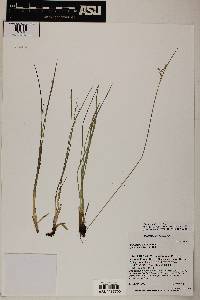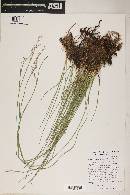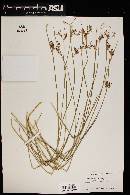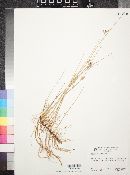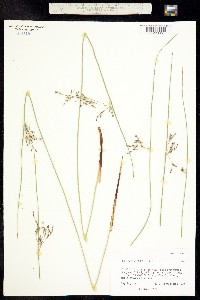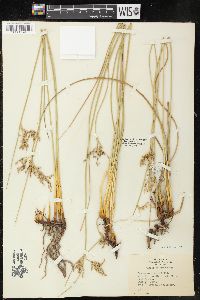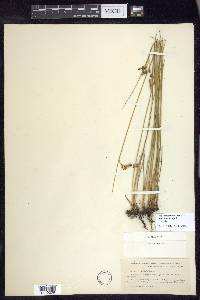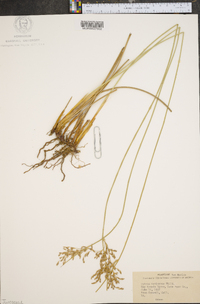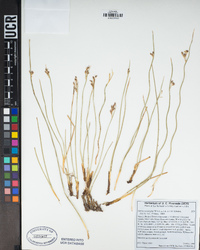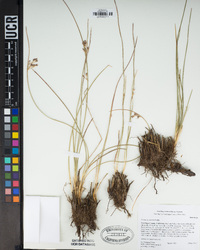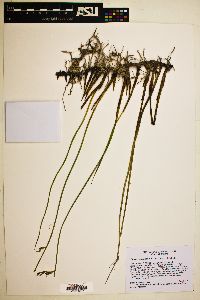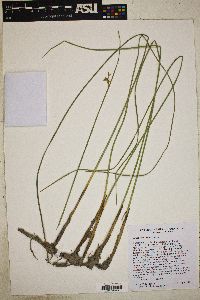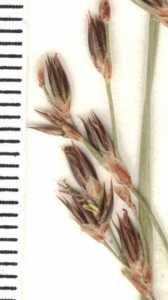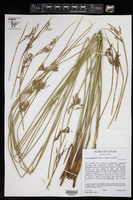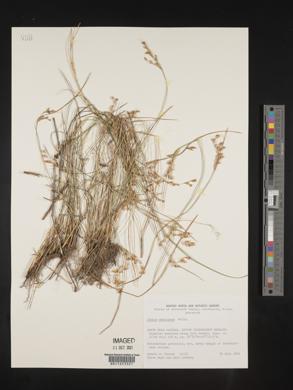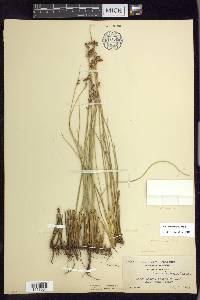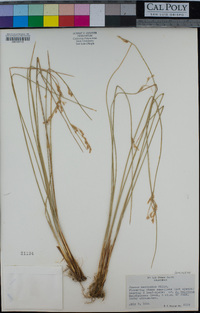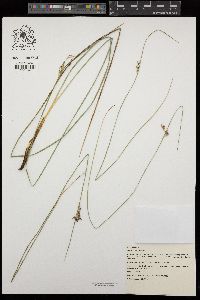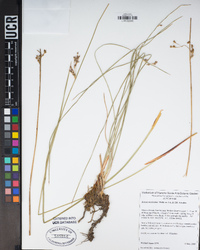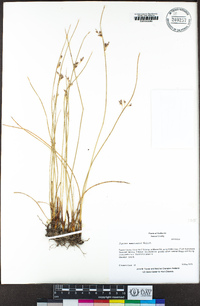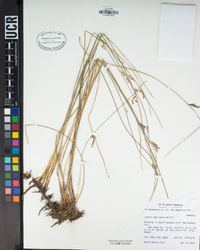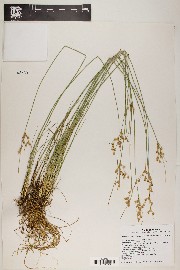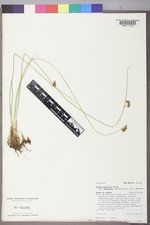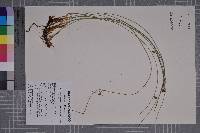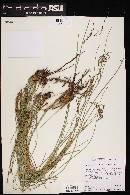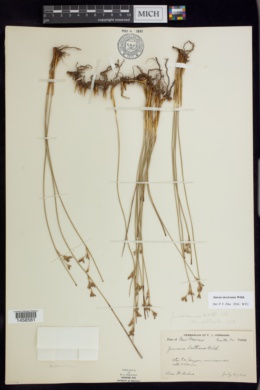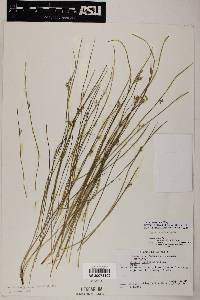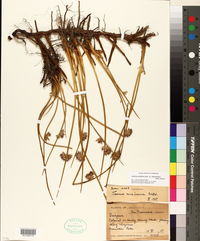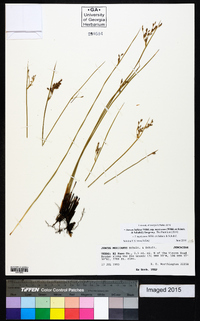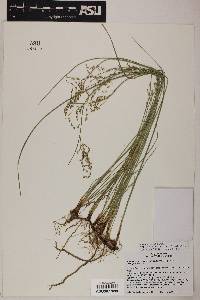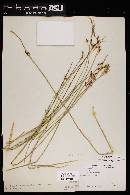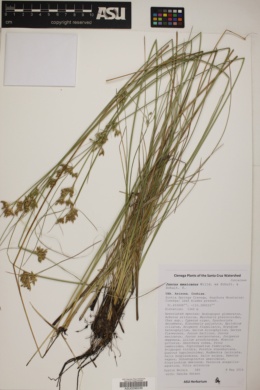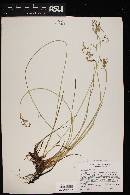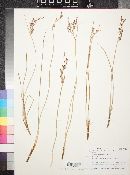
|
Juncus balticus subsp. mexicanus (Willd. ex Schult. & Schult. f.) Snogerup
 (redirected from: Juncus mexicanus Willd. ex Schult. & Schult. f.) (redirected from: Juncus mexicanus Willd. ex Schult. & Schult. f.) |
|
|
Family: Juncaceae
Mexican Rush
[Juncus arcticus subsp. mexicanus ( ex Schult. & Schult.f.) Balslev, moreJuncus arcticus var. mexicanus (Willd.ex Roem. & Schult.) Balslev, Juncus balticus var. durangensis , Juncus balticus var. mexicanus (Willd. ex Schult. & Schult. f.) Kunth, Juncus mexicanus Willd. ex Schult. & Schult. f.] |
Herbs, 2--8 dm. Culms usually compressed. Leaves: blade distinct, somewhat flattened, to 20 cm or more. Flowers: tepals usually brown or blackish, 3.5--4.5(--5.5) mm; filaments 0.2--0.4 mm, anthers 1.2--2.2 mm. Intermittent or permanent water courses, around springs, and in meadows in sandy or gravelly soils; 500--3200 m; Ariz., Calif., Colo., N.Mex., Nev., Utah; Mexico; Central America; South America.. Juncus arcticus var. mexicanus is the common phase of the species in the extreme southwest United States and Mexico; northward the variety becomes sporadic in its occurrence. Rare individuals having leaves with blades are sometimes found in otherwise bladeless populations in more northern areas but it is doubtful that these oddities represent an equivalent variant.
Rink and Licher Juncaceae of AZ, in prep; Balslev 1996, FNA 2000, Martin and Hutchins 1980 Common Name: Mexican rush Duration: Perennial Nativity: Native Lifeform: Graminoid General: Perennial rush, 15-80 cm tall, from dark-colored rhizomes, 2-5 mm thick; stems arising singly or several clumped; stems wiry, mildly to greatly compressed in cross section, often loosely spirally twisting, 1-2 mm diameter at the base. Vegetative: Each stem has 2-5 bladeless sheaths (cataphylls) which are straw-colored to brown and often shiny and longitudinally wrinkled; the upper sheath sometimes mucronate (abruptly pointed at the tip). Many stems also have 1-2 true leaves, 1 mm wide or a little wider, with blades somewhat flattened and often twisting like the stems, sheaths blackish near the base, and membraneous ligules, less than 0.5 mm long. Inflorescence: Few to many-flowered panicles, 1-8 cm long, emerging laterally from a slit in the upper half of the stem; flowers borne singly on pedicels in the inflorescence, or several close together, with 2 bracteoles at the base of each flower, plus a third bract below these; bracteoles 1-2 mm long, broadly ovate and membraneous, with a pointed to abruptly pointed tip (acute to mucronate). Flowers with 6 tepals (petal-like structures) 4-5 mm long, lanceolate, straw-colored with a green midvein, brown or hyaline margins, and a long-pointed tip. Capsules ovoid, 3-4 mm long and 1.5 mm wide, most often shorter than the tepals, smooth and shiny, with a broadly rounded or acute tip and short point (mucro) less than 1 mm long on top. Seeds greyish to dark amber, less than 1 mm long. Ecology: Found in wet meadows, stream banks and lakeshores, marshy areas, ditches, and open wetlands, often in alkaline areas, tolerating soils that dry out seasonally; grows at middle and higher elevations in the Southwest; flowers July-September. Distribution: CA, NV, UT, CO, NM, AZ; south through MEX and C. Amer. to S. Amer. Notes: This species is distinguished by being a thick-rhizomed perennial forming dense stands, with compressed, often twisted stems 1-2 mm thick at the base (J. balticus has round or only slightly compressed stems 2-4 mm thick); most stems have one or two true leaf blades, in addition to the bladeless sheaths at the base of all the stems (J. balticus only has bladeless sheaths); the inflorescence emerging from the side of the stem several cm below the top; and each flower subtended by a pair of ovate, membranaous bracteoles (use your hand lens). Juncus mexicanus is overall a more delicate plant than J. balticus, with thinner stems, smaller inflorescences, smaller flowers and capsules, and with capsules generally shorter than the tepals while J. balticus has capsules generally longer than the tepals. Ethnobotany: Roots were used as a green dye in basketry. Etymology: Juncus comes from the Latin jungere, to join or bind, referring to uses for the stems; mexicanus means of or from Mexico. Synonyms: Juncus balticus var. mexicanus, Juncus arcticus var. mexicanus Editor: SBuckley 2010, FSCoburn 2015, AHazelton 2017 |
This project was made possible in part by the Institute of Museum and Library Services [MG-70-19-0057-19].
Powered by Symbiota
